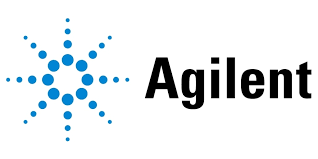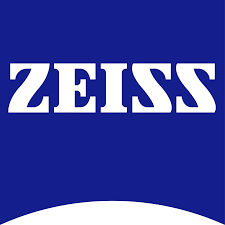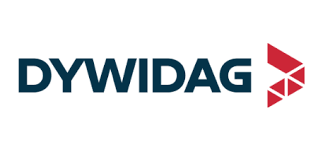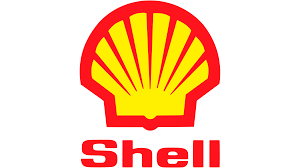Hydrogen Fuel Cells Market Report
Published Date: 15 December 2025 | Report Code: hydrogen-fuel-cells
Hydrogen Fuel Cells Market Size, Share, Industry Trends and Forecast to 2033
This report provides an in-depth analysis of the Hydrogen Fuel Cells market, covering key insights, market size, CAGR forecasts from 2023 to 2033, and a breakdown by region, technology, product, and prominent market players.
| Metric | Value |
|---|---|
| Study Period | 2023 - 2033 |
| 2023 Market Size | $5.60 Billion |
| CAGR (2023-2033) | 8.2% |
| 2033 Market Size | $12.62 Billion |
| Top Companies | Ballard Power Systems, Plug Power Inc., Toyota Motor Corporation, Hexagon Composites, FuelCell Energy |
| Last Modified Date | 15 December 2025 |
Hydrogen Fuel Cells Market Report (2023 - 2033)
Hydrogen Fuel Cells Market Overview
Customize Hydrogen Fuel Cells Market Report market research report
- ✔ Get in-depth analysis of Hydrogen Fuel Cells market size, growth, and forecasts.
- ✔ Understand Hydrogen Fuel Cells's regional dynamics and industry-specific trends.
- ✔ Identify potential applications, end-user demand, and growth segments in Hydrogen Fuel Cells
What is the Market Size & CAGR of Hydrogen Fuel Cells market in 2023?
Hydrogen Fuel Cells Industry Analysis
Hydrogen Fuel Cells Market Segmentation and Scope
Tell us your focus area and get a customized research report.
Hydrogen Fuel Cells Market Analysis Report by Region
Europe Hydrogen Fuel Cells Market Report:
Europe is projected to lead the hydrogen fuel cells market with an estimated market size of $1.44 billion in 2023, growing to $3.25 billion by 2033. The European Union's commitment to green energy and various funding programs for hydrogen technologies underpin robust market opportunities.Asia Pacific Hydrogen Fuel Cells Market Report:
The Asia Pacific region holds a significant share of the hydrogen fuel cells market, estimated at $1.09 billion in 2023, projected to grow to $2.45 billion by 2033. Countries like Japan and South Korea are at the forefront, investing heavily in hydrogen technologies and infrastructure, encouraged by government policies aimed at reducing greenhouse gas emissions.North America Hydrogen Fuel Cells Market Report:
The North American market, valued at $1.96 billion in 2023, is anticipated to grow to $4.42 billion by 2033, led by the United States and Canada. The region benefits from significant investments in hydrogen technology, commitments to clean energy initiatives, and the development of fuel cell vehicles.South America Hydrogen Fuel Cells Market Report:
In South America, the hydrogen fuel cells market is smaller, with a market size of $0.38 billion in 2023 expected to increase to $0.87 billion by 2033. This region is beginning to explore hydrogen applications, especially in mining and transportation, but growth is slower due to infrastructural challenges.Middle East & Africa Hydrogen Fuel Cells Market Report:
In the Middle East and Africa, the hydrogen fuel cells market is expected to grow from $0.73 billion in 2023 to $1.64 billion by 2033. Efforts are underway to diversify energy sources, with countries in the Gulf investing in hydrogen projects as part of their long-term strategic visions.Tell us your focus area and get a customized research report.
Hydrogen Fuel Cells Market Analysis By Technology
Global Hydrogen Fuel Cells Market, By Technology Market Analysis (2023 - 2033)
The market is dominated by Proton Exchange Membrane (PEM) systems, which are seen in transportation applications, particularly in fuel cell vehicles. The size of PEM fuel cells is projected to grow from $3.79 billion in 2023 to $8.55 billion in 2033, maintaining a market share of approximately 67.76%. Solid Oxide Fuel Cells (SOFCs) follow with a market size transition from $1.50 billion to $3.38 billion, making up about 26.79% of the market share in 2023. Alkaline Fuel Cells (AFCs) are smaller at $0.31 billion in 2023 with expectations of growth to $0.69 billion, possessing a 5.45% market share.
Hydrogen Fuel Cells Market Analysis By End Use Industry
Global Hydrogen Fuel Cells Market, By End-Use Industry Market Analysis (2023 - 2033)
The transportation sector held a significant market share of 55.64% in 2023, valued at $3.12 billion, expected to grow to $7.02 billion by 2033. Power generation follows, with a market size of $1.39 billion, projected to increase to $3.13 billion, representing a 24.82% share. Material handling and portable power applications are also relevant, showing gradual growth.
Hydrogen Fuel Cells Market Analysis By Component
Global Hydrogen Fuel Cells Market, By Component Market Analysis (2023 - 2033)
The fuel cell stack segment is crucial, with a market size of $3.79 billion in 2023, predicted to rise to $8.55 billion by 2033, maintaining a share of 67.76%. The balance of plant (BoP) components, consisting of essential systems for functionality, contribute approximately 26.79% of the market with growth from $1.50 billion to $3.38 billion over the same period. Other components, while smaller at $0.31 billion now, are also seeing increased attention as the market diversifies.
Hydrogen Fuel Cells Market Analysis By Distribution Channel
Global Hydrogen Fuel Cells Market, By Distribution Channel Market Analysis (2023 - 2033)
Direct sales dominate with a share of 67.76% in 2023 valued at $3.79 billion, expected to grow to $8.55 billion by 2033. Retail sales represent approximately 26.79% of market share, currently at $1.50 billion, projected to reach $3.38 billion. Emerging channels such as online sales are starting to emerge, reflecting changing consumer preferences and the growth of e-commerce.
Hydrogen Fuel Cells Market Trends and Future Forecast
Tell us your focus area and get a customized research report.
Global Market Leaders and Top Companies in Hydrogen Fuel Cells Industry
Ballard Power Systems:
A leading innovator in proton exchange membrane fuel cell technology, Ballard focuses on clean transportation and stationary power solutions.Plug Power Inc.:
Specializes in alternative energy technology, providing hydrogen fuel cell systems for logistics and vehicular applications.Toyota Motor Corporation:
A pioneer in fuel cell vehicles, Toyota is investing heavily in hydrogen technology as part of its strategy to achieve sustainable mobility.Hexagon Composites:
Provides innovative composite solutions for transportation and storage of hydrogen, enhancing supply chain solutions in the hydrogen economy.FuelCell Energy:
Offers solutions for distributed power generation and hydrogen production, focusing on the commercialization of fuel cell technology.We're grateful to work with incredible clients.









FAQs
What is the market size of hydrogen Fuel Cells?
The hydrogen fuel cells market is projected to grow from $5.6 billion in 2023, with an impressive CAGR of 8.2% expected until 2033. This growth is indicative of increasing adoption in various applications including transportation and power generation.
What are the key market players or companies in this hydrogen Fuel Cells industry?
Key players in the hydrogen fuel cells industry include industry leaders such as Ballard Power Systems, Plug Power, and FuelCell Energy. These companies are pivotal in driving innovation and expanding market presence across different regions.
What are the primary factors driving the growth in the hydrogen Fuel Cells industry?
The hydrogen fuel cells industry is driven by factors such as the increasing demand for clean energy solutions, technological advancements in fuel cell technology, and government initiatives promoting hydrogen as a sustainable energy source.
Which region is the fastest Growing in the hydrogen Fuel Cells market?
The fastest-growing region in the hydrogen fuel cells market is North America, expected to expand its market size from $1.96 billion in 2023 to $4.42 billion by 2033. Europe follows closely, with its market growing significantly during the same period.
Does ConsaInsights provide customized market report data for the hydrogen Fuel Cells industry?
Yes, ConsaInsights offers customized market report data for the hydrogen fuel cells industry. Clients can request tailored insights to meet specific business needs, including in-depth analysis and detailed forecasts.
What deliverables can I expect from this hydrogen Fuel Cells market research project?
Deliverables from the hydrogen fuel cells market research project typically include a comprehensive report, detailed market analysis, segmentation data, competitive landscape insights, and regional forecasts to help guide strategic business decisions.
What are the market trends of hydrogen Fuel Cells?
Current trends in the hydrogen fuel cells market include a surge in investment in clean energy technologies, increasing partnerships for R&D between private firms and governments, and growing application in various sectors such as transportation, power generation, and material handling.
